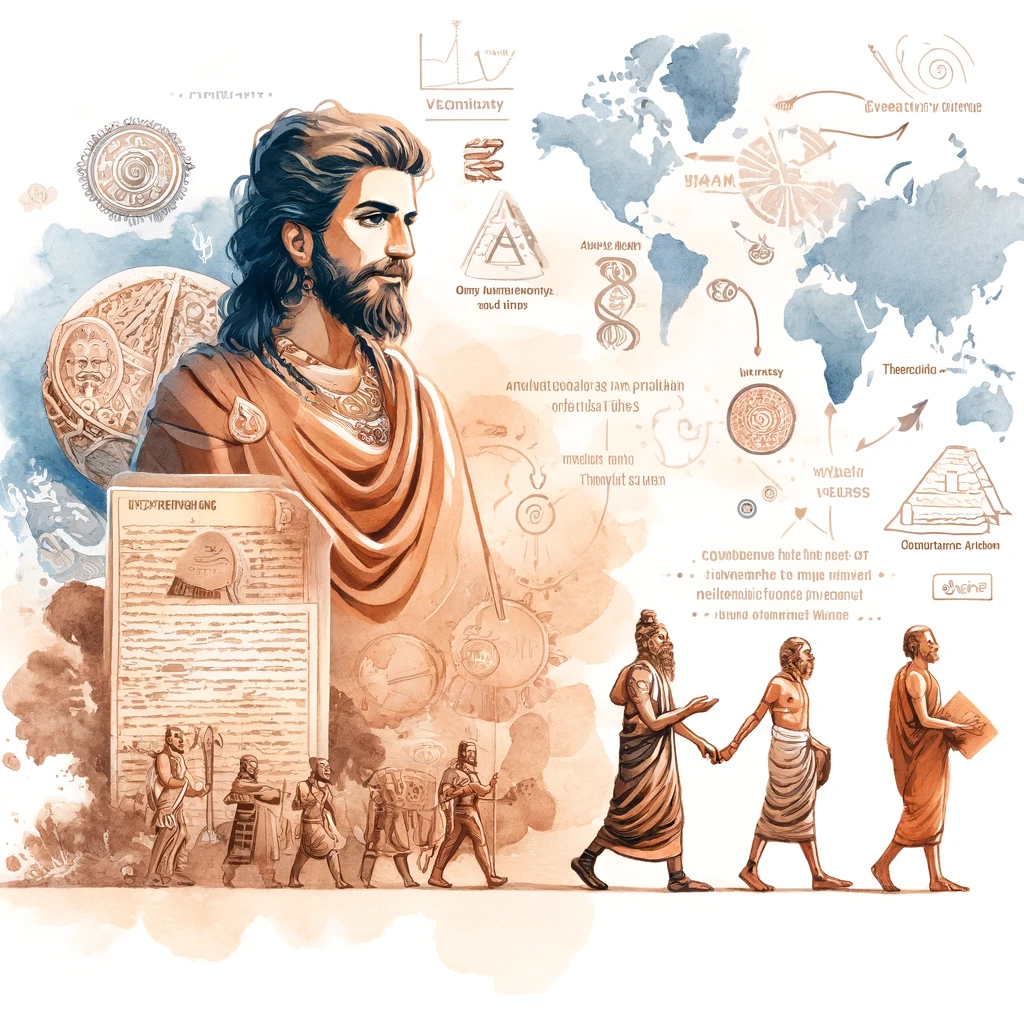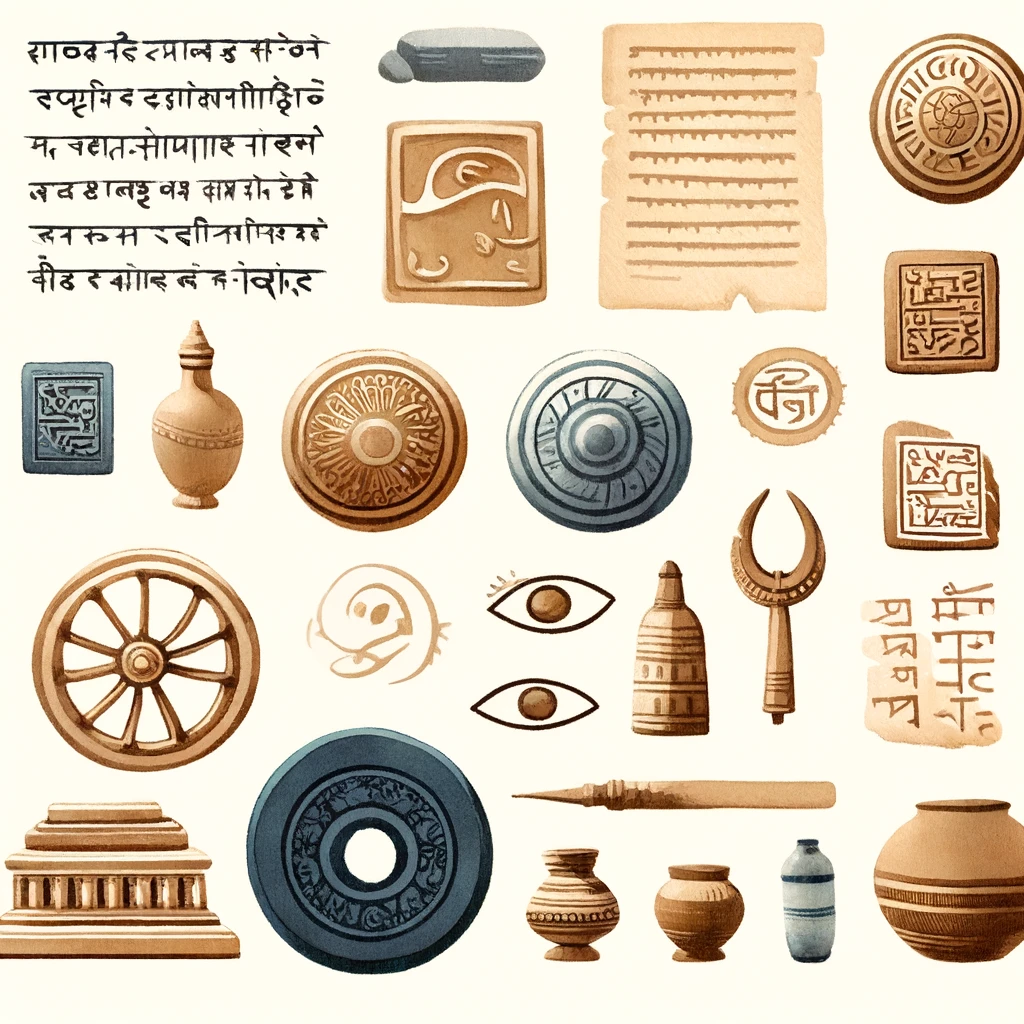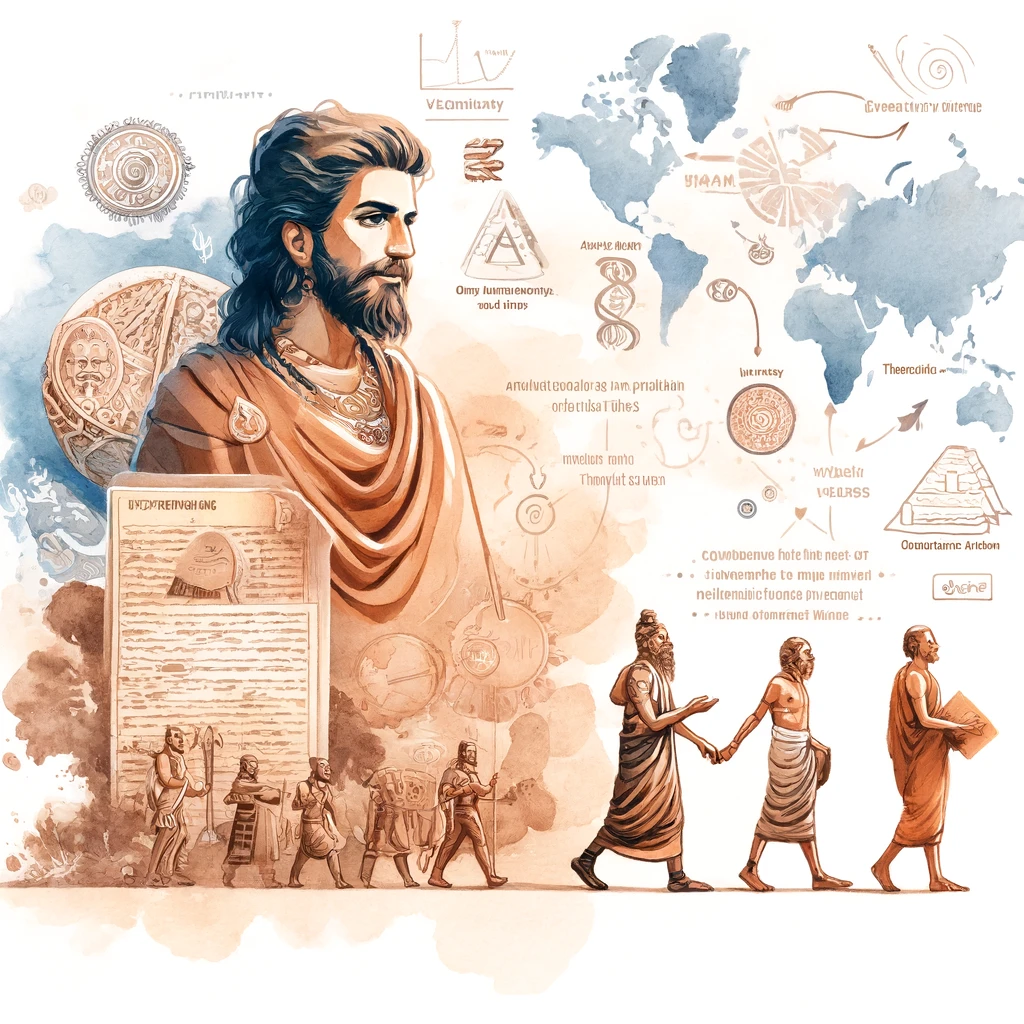The Vedic Society, which thrived during the Vedic Age (approximately 1500 BCE to 500 BCE), represents a crucial period in the history of ancient India. This era is primarily known through the Vedic texts. This provides extensive information on the social, religious, and cultural practices of the time. A significant aspect of Vedic society is the migration and settlement of the Aryans, a group whose origins and movements have been the subject of extensive scholarly debate.

Original Home and Migration of Aryans
The origin of the Aryans has been a topic of considerable debate among historians and scholars. Several theories have been proposed to explain their origins and migration into the Indian subcontinent.
The Aryan Invasion Theory
- This theory, first proposed by 19th-century European scholars, suggests that the Aryans invaded the Indian subcontinent around 1500 BCE. It brought with it distinct cultural and technological advancements.
- According to this theory, the Aryans, originally from the steppes of Central Asia (around the region of modern-day Kazakhstan and southern Russia), moved southward into India, displacing the indigenous populations and establishing their dominance.
- The invasion theory has been critiqued for its colonial undertones and the lack of archaeological evidence supporting a large-scale invasion.
The Aryan Migration Theory
- A more widely accepted version today, the Aryan Migration Theory, posits that the Aryans gradually migrated into the Indian subcontinent over several centuries rather than through a sudden invasion.
- This migration is believed to have occurred in waves, with groups of Indo-European-speaking people moving into the region and integrating with the local cultures.
- Archaeological evidence such as the spread of certain types of pottery (e.g., Painted Grey Ware) and linguistic studies support this theory of gradual migration and cultural assimilation.
The Indigenous Aryan Theory
- Some Indian scholars advocate the Indigenous Aryan Theory, which asserts that the Aryans were native to the Indian subcontinent and that there was no significant external migration.
- Proponents of this theory argue that the Vedic texts. Also, the archaeological evidence can be interpreted to support the continuity of indigenous culture rather than an intrusion from outside.
What are the Important Vedic Texts?
The Vedic texts are the primary sources of information about the Aryans and Vedic society. These texts, composed in Sanskrit, are a collection of hymns, rituals, philosophical discourses, and instructions for social conduct.
The Four Vedas
- Rigveda: The oldest of the four Vedas, the Rigveda, is a collection of 1,028 hymns dedicated to various deities. It provides insights into the early Vedic religion, social structure, and geography of the region inhabited by the Aryans.
- Samaveda: The Samaveda consists mainly of hymns from the Rigveda, set to music. It is primarily associated with the rituals of the Soma sacrifice and provides information on the liturgical practices of the time.
- Yajurveda: The Yajurveda contains prose mantras used in Vedic rituals. It offers details about the procedural aspects of sacrifices and rituals, reflecting the complexity of Vedic religious practices.
- Atharvaveda: The Atharvaveda includes hymns, spells, and incantations aimed at everyday life, including healing, protection, and domestic rituals. It provides a broader perspective on the everyday concerns and beliefs of the Vedic people.
The Brahmanas
The Brahmanas are prose texts that explain the hymns in the Vedas and provide detailed instructions for performing Vedic rituals. They offer insights into the ritualistic aspects of Vedic religion and the role of priests (Brahmins) in society.
The Aranyakas and Upanishads
- The Aranyakas, or “Forest Treatises,” are considered transitional texts between the ritualistic Brahmanas and the philosophical Upanishads. They reflect on the symbolic meanings of rituals.
- The Upanishads, composed during the later Vedic period, focus on philosophical inquiries and the nature of reality. They mark the beginning of Vedantic thought and discuss concepts like Brahman (universal soul) and Atman (individual soul).
Other Texts
- Vedangas: The Vedangas are auxiliary disciplines associated with the Vedas, including phonetics, grammar, astronomy, and ritual. They were developed to aid the proper understanding and interpretation of the Vedic texts.
- Sutras: The Sutras are concise instructional manuals covering various aspects of Vedic rituals, domestic rites (Grihya Sutras), and social laws (Dharma Sutras). They provide practical guidance on conducting daily life according to Vedic principles.
Migration and Settlement Patterns
- The Vedic texts, particularly the Rigveda, mention several geographical features, rivers, and regions, suggesting the migration routes and settlement areas of the Aryans.
- The Aryans initially settled in the Sapta Sindhu region (the land of the seven rivers, including the Indus and its tributaries) and gradually moved eastwards to the Ganga-Yamuna Doab.
- Their movement and settlement patterns are reflected in the changing focus of the Vedic hymns, from the early references to the Indus region to the later emphasis on the Ganges plain.
Conclusion
The Vedic Society and the Aryan migration are pivotal chapters in the history of ancient India. Theories about the origin and migration of the Aryans, are supported by archaeological and linguistic evidence. It provides a framework for understanding their movement into the Indian subcontinent. The rich corpus of Vedic texts offers a comprehensive view of their religious practices, social structure, and philosophical thought. For UPSC aspirants, a thorough understanding of these aspects is essential for appreciating the depth and complexity of early Indian civilization.


